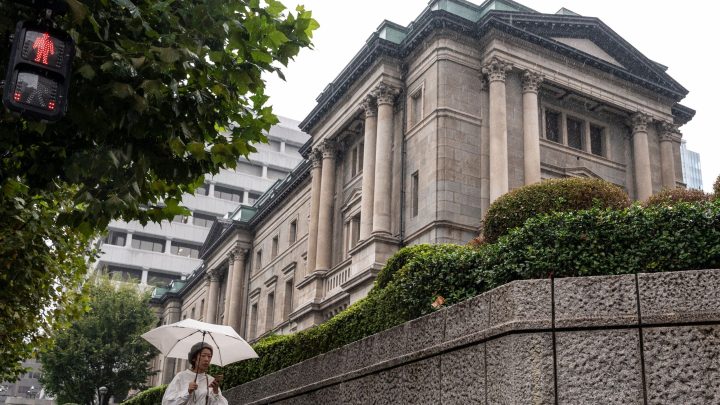
Japan loosens its grip on long-term interest rates

The Federal Reserve is meeting Tuesday and Wednesday to decide whether to raise interest rates again to cool off the economy and tamp down inflation or keep rates where they are and let things settle for a while.
Of course, that kind of decision is also being weighed by central banks around the world. On Tuesday, we got some news from the Bank of Japan. It said it’s going to ease up on what it calls its yield curve control policy. Basically, that’s a limit on bond yields, as in interest rates, that the BOJ’s been enforcing since 2016, a time before inflation became a concern.
How does the BOJ’s yield curve control program work, and could it ever be adopted in the U.S.?
Japan’s government issues short-term and long-term debt, just like our Treasury Department does. You can get two- and five-year bonds, or 10- to 30-year ones.
Until recently, the Bank of Japan was trying to keep the interest rates on all of those low. “To increase aggregate demand, consumption, capital spending, right?” said Sayuri Shirai, an economics professor at Keio University in Tokyo and a former board member of the Bank of Japan.
The central bank keeps a lid on interest rates by buying bonds, which pushes their prices up and their yields down.
For instance, if the BOJ thinks interest rates are getting too high? “The Bank of Japan will come in and then purchase an unlimited amount of government bonds,” Shirai said.
In the U.S., the Federal Reserve does have a lot of influence over very short-term bond yields. But what about long-term ones, like five-, 10- or 30-year?
Those yields are determined by supply and demand in the bond market. And what drives that?
“The market’s expectation of economic outcomes. The market’s expectation of inflation,” said Tim Duy, an economics professor at the University of Oregon.
He said there’s been discussion about the Fed exerting more control over long-term yields. Early in the pandemic, when short-term bond yields were already low and the economy was more or less shut down, the Fed was looking for tools to support the economy even further.
“One idea was that you could continue to ease monetary policy by basically saying, ‘OK, now we’re going to target one-year rates. We’re going to target five-year rates,’” Duy said.
And on and on, until long-term interest rates came down.
But once the U.S. economy started booming, the whole yield curve control idea fell by the wayside.
“The economy’s in a different space than it was prior to the pandemic. And I would be very surprised to see this conversation come back for the U.S.,” Duy said.
And now that Japan is loosening its grip on its own long-term bond yields, yield curve control could be on its way out there, too.
There’s a lot happening in the world. Through it all, Marketplace is here for you.
You rely on Marketplace to break down the world’s events and tell you how it affects you in a fact-based, approachable way. We rely on your financial support to keep making that possible.
Your donation today powers the independent journalism that you rely on. For just $5/month, you can help sustain Marketplace so we can keep reporting on the things that matter to you.

















